Who Walked Here 1.5 Million Years Ago? Ancient Tracks Uncover a Prehistoric Mystery
Ancient Footprints: A Window into Prehistoric Lives
Human footprints tell stories. Fossilized ones capture fleeting moments from the lives of extinct creatures, revealing how they lived, moved, and interacted. Among the most significant discoveries are hominin tracks in eastern Africa. These preserved footprints offer rare insights into the behaviors of early bipedal hominins, who resembled humans but were not quite like us.
New research has unearthed a groundbreaking finding: fossilized footprints from 1.5 million years ago in Kenya’s Lake Turkana region reveal that two distinct hominin species – Homo erectus and Paranthropus boisei – walked the same lakeshore at the same time. This coexistence sheds light on their interactions and environment, enriching our understanding of human evolution.
The Discovery of Kenya’s First Hominin Tracks
The first ancient hominin tracks in the Lake Turkana region were uncovered by accident in 1978. While studying fossils and sediment layers, paleontologists stumbled upon depressions initially mistaken for hippo tracks. Excavation revealed a humanlike footprint among the animal tracks, prompting excitement among researchers.
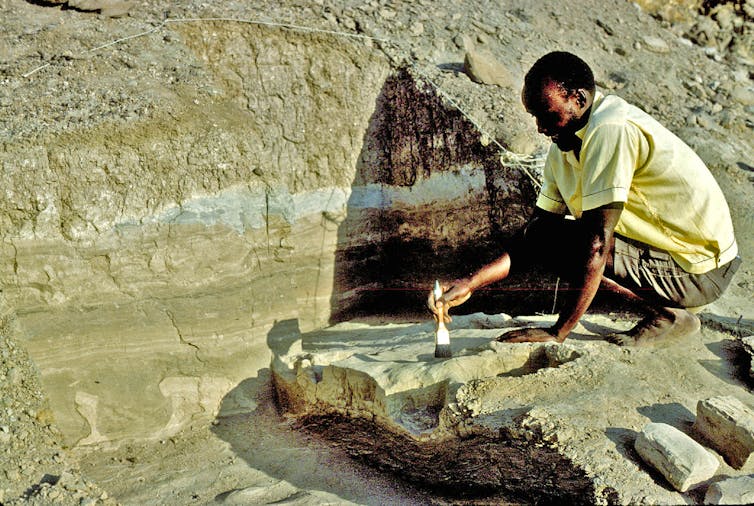
Careful excavation unveiled a series of footprints. The trail suggested an eastward journey by a hominin navigating soft mud and harder ground. One footprint revealed a slip into a hippo track, showcasing the challenges of the terrain. These tracks, preserved for over a million years, offered a rare glimpse into an ordinary moment of survival.
The 2021 Discovery: A Second Hominin Trackway
In 2021, Louise Leakey’s research team made another landmark discovery: a second set of hominin footprints, about 100,000 years older than the 1978 find. The new tracks, excavated using advanced 3D imaging techniques, revealed the coexistence of Homo erectus and Paranthropus boisei. This marks the first time evidence has shown these two species shared the same habitat simultaneously.
The tracks were formed mere hours or days apart, preserved in soft mud that hardened before waves or sunlight destroyed them. This suggests that the two species not only coexisted but also frequented the same resources and environments.

Coexisting Species: What Were They Doing?
The discovery raises fascinating questions about the behavior of these early hominins. Why were they drawn repeatedly to the lakeshore?
Evidence from teeth chemistry suggests differing diets. Paranthropus boisei, with its robust jaw, likely fed on grasses and reeds, while Homo erectus had a more varied diet, including plants and animal proteins. The lake offered abundant resources – from reeds and freshwater shellfish to birds and reptiles – but it also posed risks. Predators like crocodiles and hippos made it a dangerous habitat for 4-to-5-foot-tall bipeds.
The Significance of Hominin Tracks in Human Evolution
These tracks are more than ancient footprints. They reveal movement, behavior, and even glimpses of interaction between species. Scientists believe the repeated presence of both hominins at this lakeshore over 200,000 years hints at shared survival strategies and adaptations.
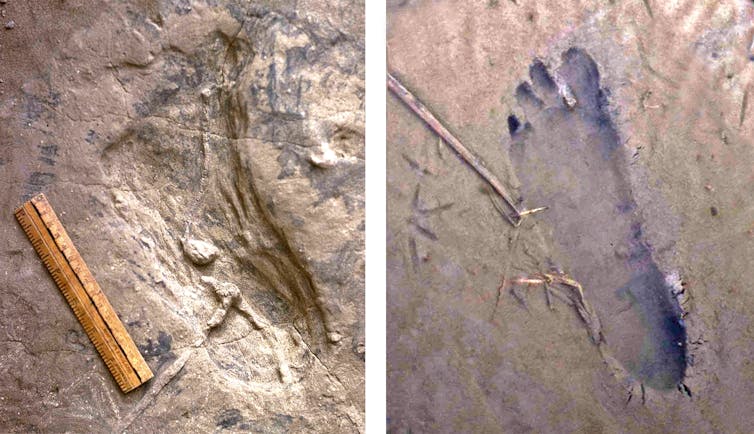
The Turkana Basin, with its rich fossil and trackway records, offers unparalleled insights into early human evolution. Unlike fossilized bones, tracks reveal direct evidence of locomotion and interaction in a natural setting.
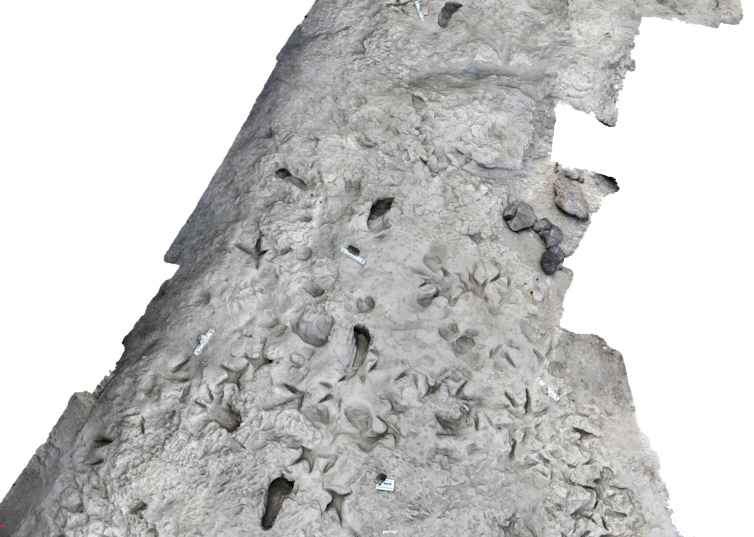
Protecting and Sharing Ancient Footprints with the World
The footprints near Ileret, 40 kilometers from the recent discoveries, have inspired efforts to preserve these invaluable records. The National Museums of Kenya is building a museum over the excavated footprint site, set to open in January 2025. This facility will protect the tracks and educate the public about their significance.
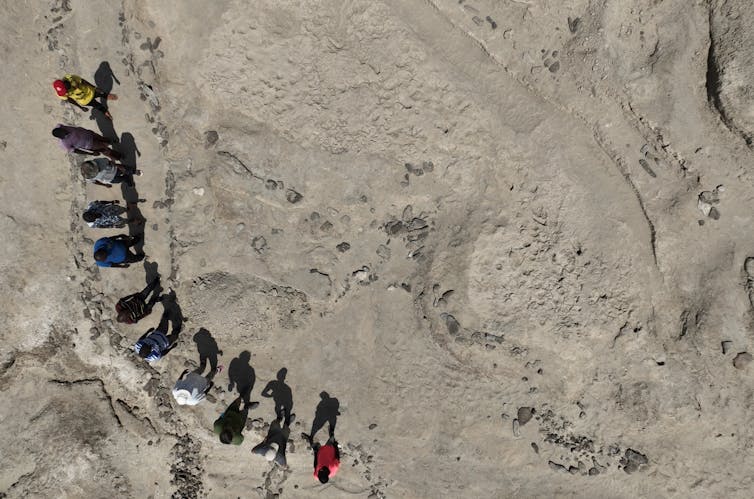
Visitors will see tracks from at least eight individuals, believed to include both Homo erectus and Paranthropus boisei. Some tracks suggest coordinated movement, hinting at possible group travel. The museum aims to inspire curiosity about early human life while fostering local engagement and education.
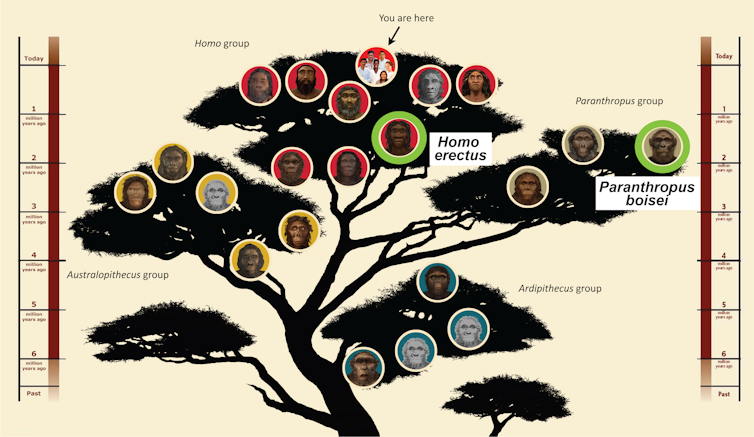
A Fascinating Glimpse into the Past
These footprints are much more than marks in the mud. They connect us to a distant past when early hominins shared landscapes, resources, and perhaps even fleeting interactions. As researchers continue to uncover more trackways, new stories will emerge, enriching our understanding of the shared journey of humanity and its ancient relatives.
Source: Who Walked Here 1.5 Million Years Ago? Ancient Tracks Uncover a Prehistoric Mystery
How Ethiopia’s 3.2-Million-Year-Old Fossil Revolutionized Our Understanding of Humanity
How Ethiopia’s 3.2-Million-Year-Old Fossil Revolutionized Our Understanding of Humanity
Who Walked Here 1.5 Million Years Ago? Ancient Tracks Uncover a Prehistoric Mystery

